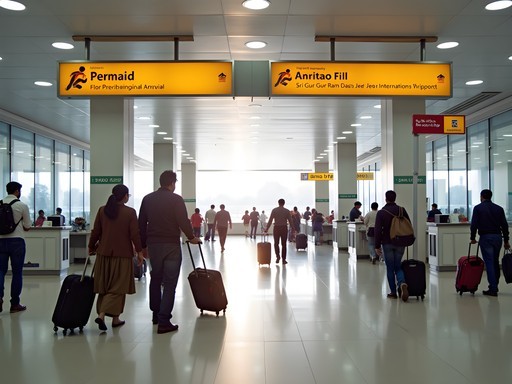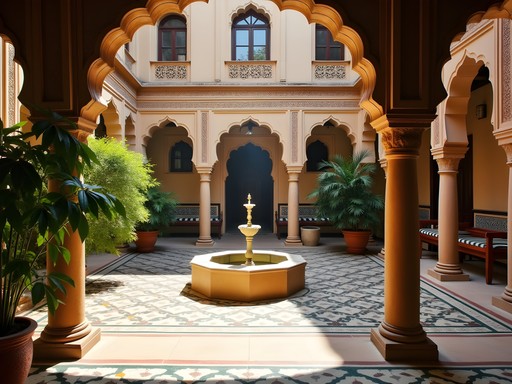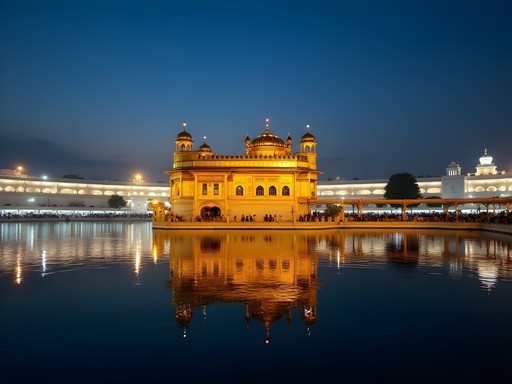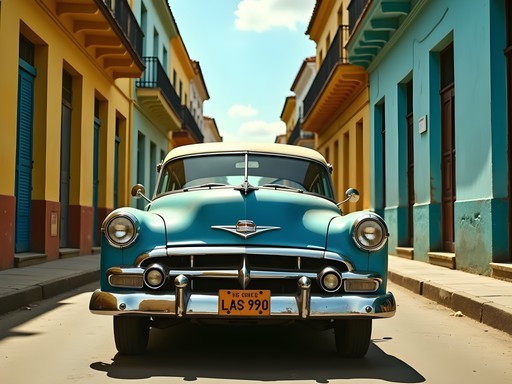Disclosure: This article contains affiliate links. We may earn a commission from purchases at no extra cost to you, which helps our travel content.
The moment our auto-rickshaw rounded the corner near the Golden Temple, I felt that familiar flutter in my chest—the one that signals I've arrived somewhere truly special. The air was thick with the aromas of garam masala, jaggery, and ghee from nearby street vendors, and despite the October chill, Amritsar pulsed with warmth. Having explored culinary destinations across continents, I've learned that truly understanding a city's food culture means navigating its streets like locals do. Ten years after my transformative time in Kerala, I found myself in Punjab's spiritual heart with a week to explore its golden treasures, sacred spaces, and border ceremonies. Whether you're traveling with little ones in tow or planning a multi-generational journey, this transportation guide will help you navigate Amritsar's vibrant tapestry of sights, sounds, and of course, flavors—without breaking the bank or getting overwhelmed in the process.
From Airport to City: Your First Amritsar Journey
Sri Guru Ram Dass Jee International Airport sits about 11 kilometers from central Amritsar, and your introduction to the city begins the moment you exit the terminal. As someone who's navigated countless unfamiliar airports, I've found that the first transfer sets the tone for your entire trip—especially when traveling with family.
Prepaid taxis are your most straightforward option, available directly outside the terminal at clearly marked counters. Expect to pay around 500-600 rupees (approximately $6-7 USD) for the 30-minute journey to the city center. The attendants speak English, and the fixed pricing eliminates haggling—a blessing when you're juggling luggage and tired children.
For budget travelers, the local bus is an adventure in itself at just 50 rupees per person. Bus #1 runs from the airport to the main bus terminal near the Golden Temple, though schedules can be unpredictable. I watched families with older children embrace this option with enthusiasm, but those with toddlers might find the taxi worth the extra expense.
If you've arranged accommodation in advance, inquire about airport pickups. Many mid-range guesthouses offer this service for roughly the same price as a prepaid taxi, but with the added comfort of someone waiting with your name on a sign—a small luxury that feels priceless after a long flight.
Before leaving home, I downloaded the offline maps to track our journey without using data. This proved invaluable when our driver took an unexpected detour that turned out to be a shortcut avoiding festival traffic—something I might have mistaken for a longer route without the visual confirmation.

💡 Pro Tips
- Book a prepaid taxi if arriving at night for safety and convenience
- Have your accommodation's address written in both English and Punjabi
- Keep small denominations of rupees handy for your first transportation needs
The Auto-Rickshaw Experience: Amritsar's Pulse
Nothing connects you to Amritsar's rhythm quite like zipping through its streets in an auto-rickshaw. These three-wheeled chariots—affectionately called 'autos'—are ubiquitous, affordable, and perfect for families wanting to experience the city like locals.
Hailing an auto is straightforward: simply raise your hand from the sidewalk, and they'll pull over. The open-sided design offers panoramic views and natural air conditioning, which my curls particularly appreciated in the dry Punjab heat. Children are typically enchanted by the novel experience—I've watched countless young faces light up at the first putt-putt-putt of the engine.
Negotiating fares is expected, though not as aggressively as in some Indian cities. A good rule of thumb: start at half the initially quoted price and settle around 60-70%. For reference, a ride from the Golden Temple to Jallianwala Bagh should cost no more than 50-60 rupees. Drivers rarely use meters, so establish the price before climbing aboard.
One October afternoon, I hired an auto driver named Gurpreet for the entire day for 800 rupees (about $10). He became our impromptu guide, taking us to his favorite kulcha shop near Sultanwind Gate—a detour that resulted in the most transcendent potato-stuffed bread I've ever experienced. These spontaneous connections are the essence of Amritsar.
For families with younger children, I recommend bringing along a lightweight travel scarf that can double as a face covering during dustier rides or as a makeshift cushion on harder seats. Mine has a hidden pocket that keeps essentials secure while navigating busy streets—particularly useful when transferring from rickshaws to walking areas.
While autos are perfect for short distances, they're less comfortable for journeys beyond city limits. For trips to the Wagah Border Ceremony (about 30 km away), consider upgrading to a taxi or joining a tour.

💡 Pro Tips
- Always negotiate and agree on the fare before starting your journey
- For families, consider hiring an auto for half or full days rather than individual trips
- Keep a photo of your destination on your phone to overcome potential language barriers
Walking the Golden Triangle: Sacred Paths on Foot
Amritsar's historic center—what I call the 'Golden Triangle'—encompasses the Golden Temple (Harmandir Sahib), Jallianwala Bagh memorial, and Guru Bazaar markets. This pedestrian-friendly area reveals itself best through unhurried exploration on foot, especially during the gentler temperatures of fall mornings and evenings.
The Golden Temple complex itself is a masterclass in pedestrian design. Removing your shoes and washing your feet before entering isn't just a religious observance—it transforms how you physically experience the space. Walking barefoot on cool marble while circling the sacred pool (sarovar) connects you to centuries of pilgrims who have made this same journey. Children seem to intuitively understand this sensory shift, often becoming noticeably calmer within the complex.
From the temple, it's a short five-minute walk to Jallianwala Bagh, the solemn memorial to those massacred during British colonial rule. The narrow brick entrance passage serves as a powerful physical reminder of the events that unfolded here. Walking these grounds offers families an opportunity for meaningful conversations about history and resilience.
The surrounding bazaars form a labyrinth of narrow lanes where vehicles can't penetrate. Here, walking isn't just practical—it's essential to experiencing the pulse of Amritsar commerce. My culinary background drew me to Guru Bazaar and Katra Jaimal Singh market, where spice vendors create custom blends before your eyes. The vibrant displays of turmeric, cardamom, and saffron create natural learning opportunities for children about ingredients and food traditions.
For these walking explorations, comfortable footwear is non-negotiable. My walking sandals provided perfect support while being easy to slip on and off when entering temples and homes—an essential feature in a city where you'll be removing shoes frequently.
One morning, I joined a free walking tour led by local university students that departed from the Town Hall at 8am. These young guides offered insights no guidebook could capture—like which shop makes the best lassi in hand-thrown clay cups that you return after drinking, continuing a centuries-old sustainability practice.

💡 Pro Tips
- Visit the Golden Temple complex early morning (4-6am) or evening (7-9pm) to avoid crowds and experience special ceremonies
- Carry a thin cotton bag for storing shoes when entering religious sites
- Download a heritage walking map from the Punjab Tourism website before your visit
City Buses and Shared Vans: Budget-Friendly Options
Amritsar's public transportation network might lack the polish of more developed tourist destinations, but therein lies its authenticity. The city's buses and shared vans (locally called 'vikrams') offer an immersive—if sometimes chaotic—window into everyday Punjabi life at a fraction of tourist transport costs.
The city bus system operates from the main bus stand near the railway station, with routes covering most major attractions. Bus #1 connects the airport to the city center, while buses #2 and #3 run circular routes hitting key destinations including the Golden Temple, Hall Bazaar, and the new town areas. At just 10-15 rupees per journey, they're unbeatable value.
During my visit, I observed several families successfully navigating the bus system by following a simple strategy: show the conductor your destination written in Punjabi (have your hotel staff help with this), and they'll alert you when to disembark. The buses themselves are basic but functional—windows open wide to create natural ventilation during warmer afternoons.
Shared vans (vikrams) operate like informal minibuses, following set routes but stopping anywhere along them when flagged down. These 10-15 seat vehicles charge around 20 rupees per person and are particularly useful for reaching outlying neighborhoods like Ranjit Avenue or Sultanwind Village, where I discovered a multi-generational family of pottery makers creating traditional clay tandoors.
For families traveling with younger children or during peak hours, I recommend the travel money belt I've relied on for years. Unlike bulky fanny packs, this slim design sits flat against your body under clothing, securing passports and extra cash while leaving your hands free to assist children boarding and disembarking.
While embracing local transport, remember that buses and vikrams don't operate on rigid schedules. They depart when full rather than at set times, requiring flexibility in your itinerary. This unpredictability becomes part of the adventure—on one particularly crowded bus journey to Khalsa College, I found myself in conversation with a local teacher who ultimately invited my travel companions and me to observe her classroom, an impromptu cultural exchange that became a trip highlight.

💡 Pro Tips
- Take a photo of bus numbers and destinations at your hotel for easy reference
- Travel outside rush hours (8-10am and 5-7pm) when using buses with children
- Carry a handkerchief or small towel for wiping seats, which can sometimes be dusty
Day Trips: Reaching Beyond Amritsar
While Amritsar itself deserves your full attention, the surrounding Punjab countryside reveals another dimension of northern Indian culture. Day trips from the city center offer families a chance to experience rural landscapes, historic sites, and agricultural traditions that have shaped Punjabi cuisine for generations.
The Wagah-Attari Border Ceremony sits atop most visitors' must-see lists, and rightfully so. This daily sunset ritual—where Indian and Pakistani border guards perform an elaborate synchronized parade—lies about 30km from central Amritsar. For families, I recommend hiring a private taxi for this excursion (approximately 1,200-1,500 rupees round-trip including waiting time). The ceremony gets crowded, and having your own transportation ensures you can leave promptly afterward when children are likely tired.
My Ayurvedic background drew me to the ancient healing springs at Durgiana Temple and Mata Lal Devi Temple, both reachable by auto-rickshaw for around 150-200 rupees round-trip. These lesser-known sites offer a more intimate spiritual experience than the (justifiably) bustling Golden Temple. The cave-like passages of Mata Lal Devi particularly enchant children with their colorful mosaics and unexpected pathways.
For a deeper dive into Punjab's agricultural heritage, arrange a village tour to witness traditional farming methods. Through my guesthouse, I connected with a local guide who took us to his family's farm in Jandiala Guru (famous for its jaggery production), about 20km from Amritsar. We spent a fascinating morning learning how sugarcane is processed into jaggery using methods unchanged for centuries—knowledge I've since incorporated into my food writing about natural sweeteners.
When planning longer excursions, protection from the elements becomes essential. I never travel without my compact umbrella, which has withstood everything from unexpected Punjab rain showers to intense border ceremony sunshine. Its compact size means it doesn't consume valuable bag space, yet provides instant shelter when needed.
For history enthusiasts, the ancient Ram Bagh Gardens (formerly Company Bagh) house Maharaja Ranjit Singh's summer palace and museum. Located within city limits, this peaceful green space offers children room to run while adults absorb the historical significance. Auto-rickshaws charge around 80-100 rupees from the Golden Temple area, making it an easy half-day excursion.

💡 Pro Tips
- Book Wagah Border transportation at least one day in advance during peak season
- Carry identification for all family members when visiting border areas
- Pack snacks and water for day trips as options may be limited outside the city
Navigating with Apps and Technology
Even in a city as steeped in tradition as Amritsar, technology has revolutionized how travelers navigate its ancient streets. As someone who bridges traditional cooking methods with modern food writing, I appreciate this blend of old and new—especially when traveling with family members who might need extra reassurance about getting around.
While ridesharing giants like Uber have limited presence in Amritsar, local alternatives fill the gap. The Ola app functions similarly to Uber and connects you with both auto-rickshaws and cars. During my October visit, I found Ola particularly valuable for evening returns to our guesthouse, when the security of a tracked ride provided peace of mind. The app's fare estimates also helped calibrate my haggling skills for street-hailed transportation.
Google Maps works surprisingly well for major landmarks, though it sometimes struggles with the maze-like alleys surrounding the Golden Temple. For these areas, I supplemented with Maps.Me, which allows downloading detailed offline maps—essential when data connections become unreliable in crowded areas or when roaming charges are a concern.
To overcome language barriers, Google Translate's camera function proved invaluable for deciphering Punjabi signage. I watched several families successfully navigate bus routes by quickly scanning destination boards through the app. Downloading the Punjabi language pack before your trip ensures this functionality works offline.
For families concerned about staying connected, a portable mobile hotspot eliminates the need for multiple SIM cards across devices. During our week-long exploration, this single device kept three travelers connected for route planning, translation needs, and occasional video calls home to share our Golden Temple experiences in real-time.
Despite these technological aids, don't underestimate the power of human connection. When my translation apps failed to communicate the specific type of vegetarian thali I was seeking, a shopkeeper's teenage daughter stepped in, eager to practice her English while helping us find exactly what we needed—a reminder that sometimes the best navigation tool is simply a smile and a willingness to connect.

💡 Pro Tips
- Download offline maps before arrival as internet connectivity can be spotty near major attractions
- Take screenshots of important addresses in both English and Punjabi to show drivers
- Consider purchasing a local SIM card at the airport for more reliable data access
Final Thoughts
As I boarded my departing flight from Amritsar, the taste of kulcha still lingering on my palate, I reflected on how the city's transportation options had shaped my experience—each mode offering a different lens through which to view this golden city. From the meditative barefoot walks around the Temple to the adrenaline-fueled auto-rickshaw rides through narrow bazaars, movement itself becomes part of Amritsar's story. For families seeking authentic cultural immersion without breaking the bank, Amritsar offers a perfect introduction to northern India's rhythms. The city demands flexibility and openness but rewards you with unfiltered connections to place and people. Whether you're watching your children's eyes widen at their first sight of the golden temple reflecting in still waters at dawn, or sharing a laugh with a local bus conductor who ensures you reach your destination, Amritsar's transport experiences become woven into your family's travel narrative. So pack your sense of adventure, comfortable shoes, and perhaps a few choice Punjabi phrases—Amritsar awaits, ready to welcome you into its golden embrace.
✨ Key Takeaways
- Auto-rickshaws offer the best balance of affordability and authentic experience for families exploring central Amritsar
- The historic center is best explored on foot, with most major sites within a 15-minute walking radius
- Local apps like Ola provide security and price transparency when needed, especially for evening transportation
- Day trips require advance planning but reveal essential dimensions of Punjab culture beyond the city
📋 Practical Information
Best Time to Visit
October-November or February-March
Budget Estimate
$30-50 per day for transportation for a family of four
Recommended Duration
5-7 days
Difficulty Level
Easy

















Comments
Nicole Russell
Danielle, this guide is exactly what I needed before my trip last year! One thing I'd add about the auto-rickshaws - I found having a portable translator really helped with communication, especially when trying to explain less touristy destinations. Also, for anyone walking around the Golden Temple area, I recommend going super early (5am) at least once. The morning light on the water is magical, and you'll avoid the midday crowds. The free shuttle from the airport was reliable but PACKED - if you're arriving with lots of luggage, the prepaid taxi might be worth the extra rupees. Has anyone tried the new metro construction? Curious if that's changing how people get around!
moonmaster
The metro was still under construction when I visited last month. Locals said it's been delayed again, typical India infrastructure timing! 😂 Stick with rickshaws for now.
coffeestar
Those kulchas look amazing! Can't wait to try them when I visit.
moonmaster
You HAVE to go to Kesar Da Dhaba for kulchas. It's a bit hard to find in the old city, but any rickshaw driver knows it. Worth getting lost for!
coffeestar
Thanks for the tip! Adding it to my list right now.
moonmaster
Just got back from Amritsar last week! The auto-rickshaw advice is spot on. We found a driver named Gurpreet near our hotel who became our unofficial guide for three days. He charged us 800 rupees for a half-day tour including Wagah Border and some local food spots. For getting around the Golden Triangle area, walking was definitely the way to go - the narrow streets have so much character that you'd miss in a vehicle. The shared vans were chaotic but dirt cheap (20 rupees) to get to Khalsa College. One tip: download an offline map because Google Maps sometimes gets confused in the older parts of the city.
escapepro
Great post! Planning to visit Amritsar next month - are the auto-rickshaws safe for solo travelers at night? Any specific areas to avoid?
Nicole Russell
I was there solo last year! Auto-rickshaws are generally safe, but I'd recommend using the ones near major hotels or pre-arranging through your accommodation after 9pm. The area around the Golden Temple is well-lit and busy even late, but I avoided the outskirts after dark.
escapepro
Thanks Nicole! That's super helpful. Did you negotiate fares beforehand?
Nicole Russell
Always! Start at 50% of their first offer and settle around 60-70%. I kept a small notebook with common prices jotted down after asking my hotel staff what was reasonable.
journeyking
Love those auto-rickshaws! Best way to see the real city.
Megan Martin
Excellent guide, Danielle. For business travelers with limited time in Amritsar, I recommend staying within walking distance of the Golden Temple. I found that most meetings and key sites were accessible from this central hub. For those with early morning flights, arrange transportation the night before - the prepaid taxi counter at the airport isn't always open for early departures. Also, the Uber service in Amritsar was surprisingly reliable during my stay, especially when I needed to show exactly where I was going without language barriers.
wanderlustace
The Golden Temple at sunrise is MAGICAL! We walked there from our guesthouse and it was the highlight of our entire India trip. Danielle, your description of the auto-rickshaw rides brought back so many memories! Those drivers are seriously skilled navigating those narrow streets.
coffeegal
Is it safe for solo female travelers to use auto-rickshaws at night? Planning my trip for January.
Megan Martin
I was there on business last month and used auto-rickshaws as a solo female traveler, including some evenings. Generally felt safe but I avoided very late night travel. Have your hotel arrange rides after dark if possible, and always confirm the fare before getting in.
coffeegal
Thanks Megan, that's really helpful advice!
coffeeguy
Just got back from Amritsar last week and this guide is SPOT ON! Those auto-rickshaws are wild rides but so much fun. We tried the shared vans too and saved a ton of money. Best decision was getting up at 4am to walk to the Golden Temple for the morning ceremonies - streets were empty and peaceful. Anyone heading there should definitely try this!
Hannah Woods
Great breakdown of transportation options! When I backpacked through Amritsar last year, I found the auto-rickshaws to be incredibly convenient but definitely had to sharpen my haggling skills. One tip I'd add: if you're staying near the Golden Temple, learn the walking routes between major sites. I mapped everything out in my pocket guide and ended up walking most places within the old city. The morning walks were particularly magical with fewer crowds and beautiful light for photography. Also found that most auto drivers understand basic English, but having your destination written in Hindi/Punjabi helps tremendously.
escapebuddy
Thanks for the haggling tips! How much would you say is fair for a ride from the airport to the city center?
Hannah Woods
I paid about 400-450 rupees from the airport to near Golden Temple area. Start by offering 300 and settle around 400. The prepaid taxi booth is easier though - no haggling needed!
Venture X
Premium card with 2X miles, $300 travel credit, Priority Pass